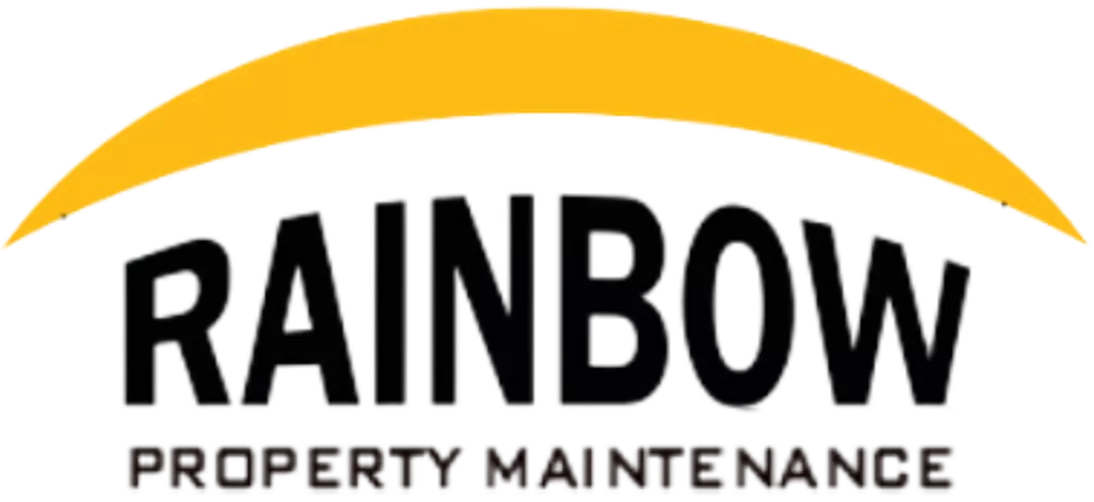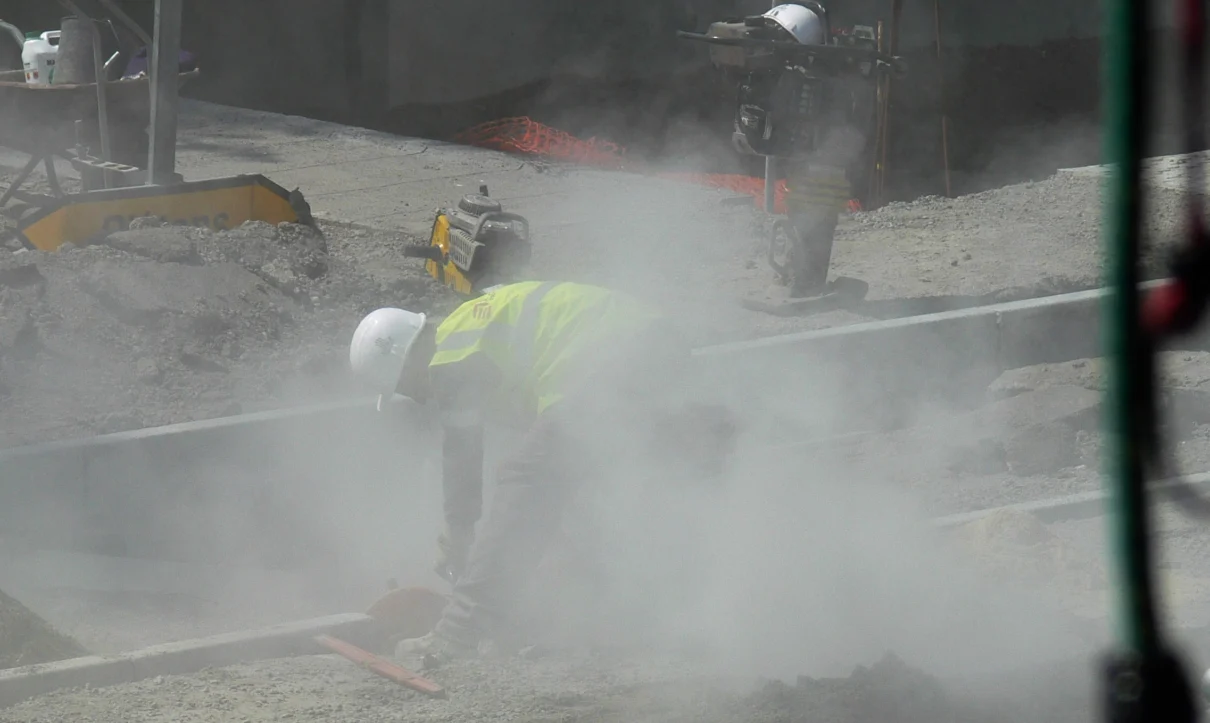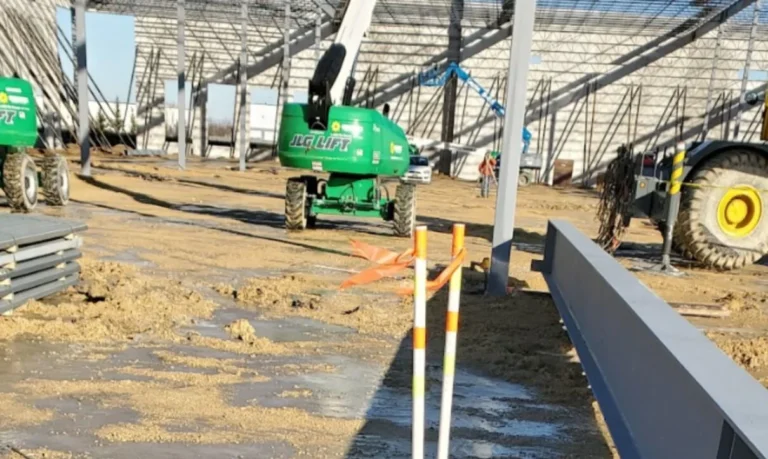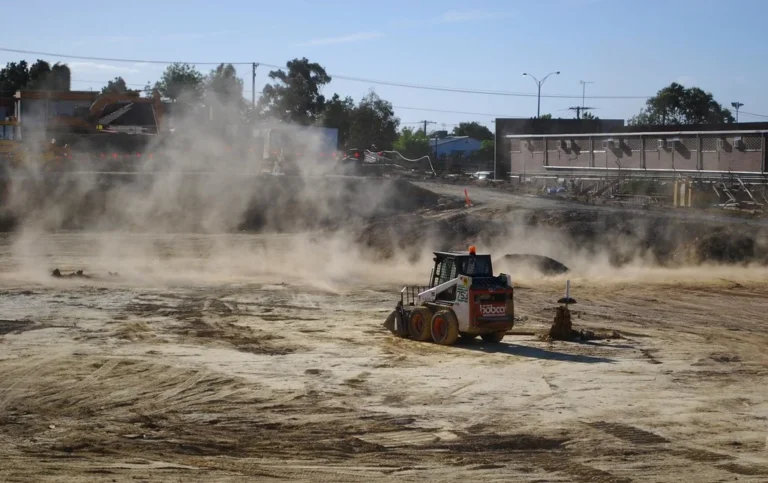Impact of Construction Dust on Health
Construction dust is an often-overlooked hazard that poses significant risks to health and well-being.
Understanding the impact of construction dust on health is crucial for ensuring the safety and health of workers and nearby residents, making the role of professional cleaning services indispensable.
Key Takeaways:
- Inhalation of construction dust can lead to serious respiratory issues and diseases.
- Construction dust contains harmful substances including silica, asbestos, and heavy metals.
- Regular cleaning and dust control measures are essential to minimize health risks.
- Professional cleaning services provide specialized solutions to control and mitigate construction dust.
Understanding Construction Dust
Construction dust comprises a variety of particles generated during construction activities. But what exactly constitutes this dust, and where does it come from?
Defining Construction Dust
Construction dust is made up of fine particles that are dispersed into the air during building, demolition, renovation, and construction work. These particles can include substances like concrete, wood, drywall, and brick, which break down into minuscule bits because of cutting, grinding, drilling, and sanding. It’s these tiny, often invisible particles that pose significant construction dust hazards.
Common Sources and Types of Construction Dust
Construction dust originates from several common sources on-site:- Concrete and Masonry Dust: When cutting or sawing concrete and masonry materials.- Wood Dust: Generated from cutting or sanding wooden structures.- Drywall and Plaster Dust: Resulting from the installation or removal of drywall and plaster.- Metal Dust: Arising from cutting or welding metals.
Dust types can vary greatly, encompassing everything from fine particulate matter to large, coarse materials. This variation in types of construction dust means that different dust control strategies might be required, tailored to the specific materials involved.
In drilling down into these sources of dust, we start to see the importance of robust dust control measures. Without proper handling, these particles can circulate freely, leading to severe health issues for workers and anyone in the surrounding areas.
For businesses looking to minimize these hazards, it’s pivotal to invest in professional cleaning services. These services are equipped with the tools and expertise to handle even the most stubborn dust issues, keeping your construction site safe and compliant.
Explore more about our comprehensive Construction Site Cleaning Services to ensure your project stays safe and compliant here.
Health Risks Associated with Construction Dust
Construction dust presents various threats to health, producing both immediate discomfort and long-term ailments. Understanding these risks is pivotal for maintaining a safe work environment.
Short-term Effects
When inhaled, construction dust can cause instant irritation. Eyes become itchy, noses run, and throats feel sore. Skin contact might lead to rashes or itching. For individuals with allergies, exposure can trigger severe reactions. Dust particles known as dust allergens cause sneezing, coughing, and respiratory distress. These symptoms, while immediate, can result in decreased productivity and increased sick leave.
Long-term Health Implications
The long-term health implications of construction dust are even more alarming. Repeated exposure can lead to chronic respiratory diseases. Workers may develop conditions like chronic bronchitis or asthma. In some cases, prolonged inhalation of hazardous dust particles can result in serious illnesses such as lung cancer.
Silica, commonly found in construction dust, is a significant culprit behind such chronic conditions. Inhaling fine silica particles can cause silicosis, a debilitating lung disease with no cure. Likewise, asbestos, another harmful dust, can lead to asbestosis and mesothelioma—both life-threatening illnesses.
The Importance of Dust Control
Given these severe health risks, it’s evident that effective dust control is necessary on construction sites. Regular cleaning minimizes inhalable dust and reduces harmful exposure. Through proper dust management, we can protect our workforce from these potential dangers.
Call to Action
Professional cleaning services play an instrumental role in managing dust on construction sites. By utilizing advanced equipment and techniques, they ensure a safer work environment, mitigating the health risks associated with construction dust.
Explore our comprehensive Construction Site Cleaning Services to ensure your project stays safe and compliant here.
By adhering to stringent dust control measures, we safeguard the health of workers, minimize absenteeism, and enhance productivity. Let’s prioritize health and safety in our work environments, always striving for cleaner, safer construction sites.
Silica and Its Dangers
Silica is a mineral found in numerous construction materials, including sand, concrete, and stone. During construction activities, such as cutting or grinding, these materials release silica dust into the air. It’s these tiny particles that pose significant health risks.
Silica in Construction Dust
Silica dust is pervasive on construction sites. When materials containing silica are disturbed, the dust becomes airborne. Workers are then at risk of inhaling this dangerous substance. Silica exposure is a serious concern because the particles are so fine that they can penetrate deep into the lungs.
Health Risks of Silica Exposure
The health risks associated with silica exposure are alarming. Inhaling silica dust can lead to a condition known as silicosis. This lung disease is chronic and incurable, causing inflammation and scarring in the lungs. Over time, affected workers may experience severe respiratory distress, and in advanced cases, it can be fatal.
But the risks extend beyond silicosis. Silica dust is also linked to other severe ailments, including lung cancer, tuberculosis, and chronic obstructive pulmonary disease (COPD). Due to these silica health risks, it is critical for construction companies to take preventive measures to protect their workers.
Implementing Dust Control Measures
Given the grave health implications, implementing effective dust control measures is vital. Regular site cleaning can significantly reduce silica levels in the air. Professional cleaning services are equipped with the tools and expertise needed to mitigate silica hazards effectively.
Explore our comprehensive Construction Site Cleaning Services to ensure your project stays safe and compliant here.
In conclusion, recognizing the dangers of silica and investing in professional cleaning services can make a significant difference. Let’s prioritize worker safety to minimize health risks on construction sites.
The Role of Asbestos in Construction Dust
Understanding the dangers of asbestos within construction dust is crucial for worker safety. Asbestos, once a common material in construction, poses significant health risks when its fibers become airborne.
Understanding Asbestos and Its Harmful Effects
Asbestos is a group of minerals that were widely used in construction for their fire resistance and strength. However, disturbing these materials during construction releases tiny asbestos fibers into the air. These fibers, when inhaled, can lodge in the lungs and remain there for years.
The health risks associated with asbestos exposure are severe and often fatal. Exposure can lead to diseases such as asbestosis, lung cancer, and mesothelioma. Asbestosis causes scarring of the lung tissue, leading to severe respiratory issues. Mesothelioma, a rare cancer affecting the lining of the lungs and other internal organs, is directly linked to asbestos exposure. Alarmingly, these health effects can appear decades after initial exposure, making asbestos a silent killer on construction sites.
Regulations and Safety Measures to Manage Asbestos Exposure
Given the severe risks, stringent asbestos regulations have been implemented worldwide. These regulations mandate identifying and managing asbestos in construction materials to protect workers. Procedures include conducting thorough asbestos assessments before commencing work and implementing rigorous control measures during construction activities.
Safety measures focus on minimizing asbestos fiber release. These include wetting down materials to reduce dust, using HEPA filters in ventilation systems, and ensuring proper disposal of asbestos-containing waste. Personal protective equipment (PPE), such as respirators and protective clothing, is also essential to protect workers from exposure.
Professional cleaning services play a vital role in managing asbestos risks. They ensure comprehensive site clean-ups, adhering to all regulatory standards to create a safer working environment.
Explore our comprehensive Construction Site Cleaning Services to ensure your project stays safe and compliant here.
In conclusion, proactive asbestos management is critical. Investing in professional cleaning services helps minimize exposure, adhering to safety regulations and ultimately protecting the health of everyone involved. Let’s commit to safer construction practices for a healthier future.
Heavy Metals and Toxic Substances in Dust
Construction dust frequently contains heavy metals and other toxic substances that pose significant health risks. Identifying and understanding these hazardous materials is crucial for ensuring a safe work environment.
Identifying Heavy Metals Commonly Found in Construction Dust
Heavy metals are prevalent in many materials used on construction sites. Some of the most common ones include:- Lead: Found in old paint and pipes.- Mercury: Used in certain electrical devices.- Cadmium: Present in batteries and certain coatings.- Arsenic: Used in some wood preservatives.
These metals can become airborne during activities like demolition, cutting, or sanding. Once airborne, they contribute to the dangerous mix of construction dust that can be inhaled by workers.
The Toxic Effects of Heavy Metals on Health
Exposure to heavy metals can have severe health consequences. Lead exposure, for instance, can lead to neurological problems, especially in children. It’s also linked to high blood pressure and kidney damage in adults. Mercury is known for its detrimental effects on the nervous system and kidneys. Cadmium exposure can cause lung damage and is a known carcinogen. Arsenic exposure leads to skin lesions, developmental effects, cardiovascular disease, and cancer.
The toxic nature of these substances often requires immediate medical attention. Prolonged exposure exacerbates the risks, leading to chronic conditions that may be irreversible. Therefore, managing metal toxicity on construction sites is paramount.
Implementing Effective Dust Control Measures
Given the severe health implications of heavy metals, it is vital to implement stringent dust control measures. Regular cleaning and encapsulation of hazardous materials are key strategies to minimize exposure. Using specialized equipment and trained professionals ensures that these toxic substances are handled correctly.
Explore our comprehensive Construction Site Cleaning Services to ensure your project stays safe and compliant here.
In conclusion, understanding the dangers of heavy metals in construction dust and investing in professional cleaning services are essential. This approach minimizes health risks and ensures compliance with safety regulations, safeguarding the well-being of workers. Let’s prioritize a healthier work environment through proactive measures.
Preventive Measures and Best Practices
Effective dust control is vital on construction sites, not just for compliance but for the health of everyone involved. Let’s delve into why regular cleaning and best practices are essential.
Importance of Regular Cleaning to Control Dust Levels
Regular cleaning is the cornerstone of dust control measures. By maintaining cleanliness, we can significantly reduce the airborne particles that pose health risks. Dust buildup leads to respiratory problems, allergies, and even more severe long-term illnesses for workers. Consistent cleaning practices mitigate these hazards and promote a safer work environment.
Professional cleaning services play a pivotal role here. Their expertise and equipment can remove stubborn dust efficiently. This prevents particles from becoming airborne again, contributing to a healthier site overall.
Best Practices in the Construction Industry for Dust Mitigation
Adopting best practices ensures effective dust mitigation. Here are a few key strategies:
- Wet Methods: Using water during cutting or grinding can suppress dust significantly. This simple technique keeps dust from becoming airborne.
- Local Exhaust Ventilation (LEV): Installing LEV systems near the source of dust can capture particles before they disperse. This is particularly useful in enclosed spaces.
- Personal Protective Equipment (PPE): Providing workers with masks and respirators is a must. It acts as the last line of defense against inhalation of hazardous dust.
- Site Layout Optimization: Arrange your site to minimize dust spread. Keep dusty activities away from frequently used areas whenever possible.
- Routine Assessments: Regularly evaluate dust levels and adjust your cleaning practices accordingly. Continuous monitoring helps in making necessary improvements to your dust control strategies.
Implementing these best practices enhances the efficiency of dust control methods, ensuring a safe and healthy work environment.
For a more comprehensive approach to dust control, consider professional services that specialize in construction site cleaning. They have the knowledge and tools to address all aspects of dust management.
Explore our comprehensive Construction Site Cleaning Services to ensure your project stays safe and compliant here.
Professional Cleaning Services
Professional cleaning services offer immense benefits for construction sites. They not only enhance safety but also boost efficiency.
Benefits of Hiring Professional Cleaning Services for Construction Sites
Hiring professional cleaning services brings numerous advantages. Firstly, these services are equipped with high-grade tools and techniques, making them adept at handling the unique challenges of construction site cleaning. From debris removal to fine dust particulates, professionals handle it all.
Moreover, professional cleaners adhere strictly to health and safety regulations, ensuring that all areas of the site are thoroughly cleaned. This compliance minimizes the risk of accidents and health issues among workers, creating a safer work environment. Additionally, regular cleaning services can extend the life of construction equipment by preventing dust buildup, which can cause machinery to degrade faster.
A cleaner site also improves overall worker morale. Employees feel more comfortable and can focus better on their tasks, leading to increased productivity.
How Professionals Ensure Thorough Cleanup and Dust Control
Professional cleaners use a range of strategies to ensure comprehensive dust control. Here are a few methods:
- Advanced Equipment: Professional cleaning teams utilize state-of-the-art equipment such as industrial vacuums and HEPA filters, which are designed to capture even the smallest dust particles.
- Systematic Approaches: Trained cleaners follow systematic cleaning plans that cover every corner of the site. This approach ensures no area is overlooked, providing thorough dust control from start to finish.
- Protective Measures: Professionals also implement various protective measures to contain dust spread. These include using barriers and wet cleaning techniques to trap dust particles effectively.
- Regular Maintenance: Professional services offer ongoing maintenance schedules to keep your site dust-free consistently. This regular upkeep is crucial for maintaining a safe and healthy workspace.
For a more comprehensive cleaning approach, consider hiring experts specialized in construction site cleaning. Their knowledge and tools are indispensable for managing dust effectively.
Explore our comprehensive Construction Site Cleaning Services to ensure your project stays safe and compliant here.
Integrating professional cleaning services into your construction project is a wise investment. Not only does it protect health and safety, but it also enhances efficiency and compliance. Let’s prioritize cleaner, safer construction sites for everyone.
Regulatory Standards and Compliance
Adhering to regulatory standards for dust control is not just a legal requirement; it’s a vital aspect of ensuring worker safety on construction sites. Let’s explore the regulations and the role of professional cleaners.
Overview of Regulatory Standards for Dust Control and Worker Safety
Regulatory standards are in place to minimize dust-related health hazards on construction sites. Organizations such as OSHA (Occupational Safety and Health Administration) set stringent guidelines to protect workers from exposure to harmful dust. These regulations specify permissible exposure limits for various substances found in construction dust, including silica, asbestos, and heavy metals.
Compliance with these standards involves implementing control measures to reduce dust levels. This includes using engineering controls like local exhaust ventilation, applying administrative controls like job rotation to limit exposure time, and ensuring the proper use of Personal Protective Equipment (PPE).
Audits and inspections are regularly conducted to ensure adherence to these standards. Non-compliance can lead to hefty fines and legal actions, underscoring the importance of meeting regulatory requirements
The Role of Professional Cleaners in Helping Businesses Meet Compliance Standards
Professional cleaning services play an essential role in helping construction businesses meet these stringent regulatory standards. Here’s how:
- Expertise and Knowledge: Professional cleaners are well-versed in the regulations and know exactly what is required to stay compliant. They receive ongoing training to keep up with any changes in standards.
- Advanced Equipment: They use specialized equipment designed to meet regulatory requirements, such as industrial-grade vacuums and HEPA filters that can capture even the finest dust particles.
- Systematic Cleaning Processes: Professional cleaners follow systematic and thorough cleaning protocols to ensure all areas of the site are addressed. This level of detail is crucial in maintaining compliance.
- Documentation and Reporting: Professional services provide detailed documentation and reports that can be presented during regulatory inspections. This paperwork is often critical for proving compliance.
By employing professional cleaners, construction businesses can significantly reduce the risk of non-compliance while ensuring a safer environment for their workers.
Explore our comprehensive Construction Site Cleaning Services to ensure your project stays safe and compliant here.
Effective adherence to regulatory standards is crucial for construction site safety. By integrating professional cleaning services, businesses can confidently meet these standards, promoting worker safety and avoiding legal pitfalls. Let’s commit to a cleaner, safer future.
Conclusions
Ensuring effective dust control through professional cleaning services is key to protecting health and meeting regulatory standards on construction sites. Consistent adherence to these measures helps in minimizing the risks associated with construction dust, such as respiratory issues and serious diseases. Professional cleaning services provide tailored solutions designed to address specific dust control needs on construction sites. Their expertise, combined with the use of advanced equipment, ensures thorough cleanup and regular maintenance. This not only keeps dust levels within compliant limits but also fosters a healthier and safer work environment. From systematic cleaning approaches to specialized tools like industrial-grade vacuums and HEPA filters, professional cleaning plays a crucial role. Moreover, employing these services can boost employee morale and productivity, as a clean and safe workspace encourages better focus and efficiency. For businesses aiming to remain compliant and safeguard their workforce, employing professional cleaning services is a wise investment. This proactive approach not only ensures compliance with stringent regulations but also significantly reduces the risk of health hazards. By integrating these services, construction companies can confidently navigate the complexities of dust management, knowing they have experts handling the job. It’s a step that demonstrates a commitment to both safety and operational excellence. Learn how our specialized cleaning solutions can address all your dust control needs here.—Consider investing in specialized cleaning services to safeguard health and ensure compliance with the highest safety standards. Schedule a consultation or explore our comprehensive range of services today to see how we can help you maintain a safe and compliant construction site.
Frequently Asked Questions (FAQ):
What are the immediate health effects of construction dust exposure?
Immediate effects include irritation of the eyes, nose, and throat, as well as allergic reactions and respiratory issues.
Can construction dust cause long-term health problems?
Yes, long-term exposure to construction dust can lead to severe respiratory diseases, including chronic bronchitis, silicosis, and even cancer.
How can professional cleaning services help manage construction dust?
Professional cleaning services use specialized equipment and techniques to effectively remove dust and reduce health hazards on construction sites.
Are there regulatory requirements for dust control on construction sites?
Yes, there are strict regulations and standards for dust control to ensure worker safety and minimize health risks, which professional cleaning services help businesses comply with.
What are the benefits of regular dust control measures?
Regular dust control measures contribute to a healthier work environment, reduce the risk of health issues, and ensure compliance with regulatory standards.
Are eco-friendly dust control options available?
Yes, many professional cleaning services offer green cleaning options that use environmentally friendly methods and products to control dust without harming the environment.
“








